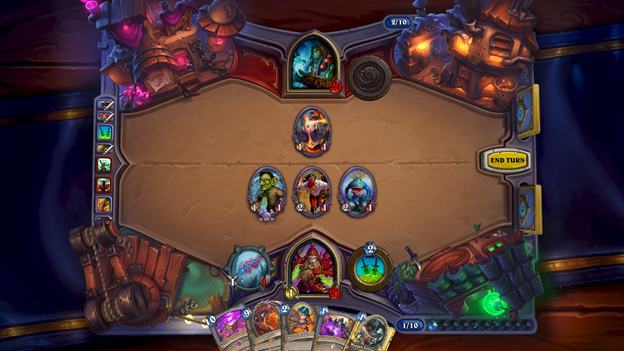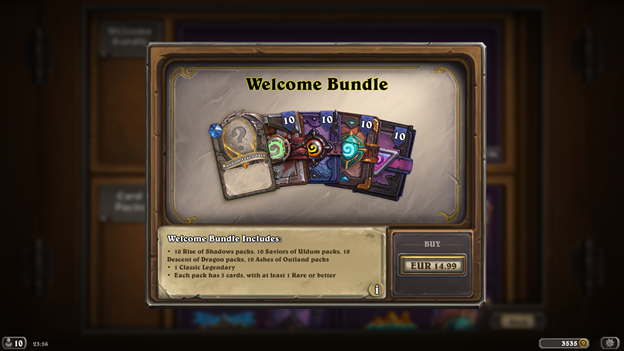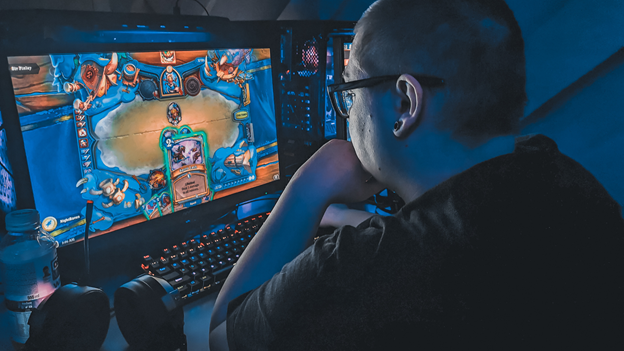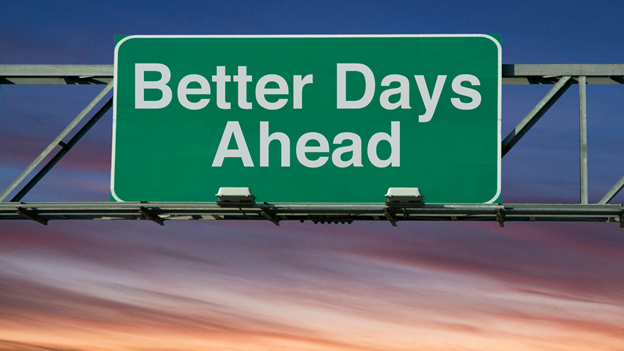How To Beat A Hearthstone Addiction

Whether it’s Magic: The Gathering, Yu – Gi – Oh or Pokemon at some point in our childhood we may have been exposed to trading card games and seen first-hand how these games can spread like wildfire. Blizzard seized the opportunity back in 2014 to release their version of an online card game based on the World of Warcraft universe. Like most things that Blizzard does, it took the gaming community by storm. The appeal of the game was widespread as it tickled the fancy of various card game players like professional Poker players such as Lifecoach.
However, 8 years in, the game is still going strong and has numerous players still trapped in an addictive cycle of playing. In this article, we are going to break down the addictive features of the game and how to overcome them.
Content
What Is Hearthstone?

For the benefit of the readers that are not familiar with the game; Hearthstone is an online card game where you collect cards by opening virtual packs. These packs are bought using gold, a currency earned in-game, or individual cards can be crafted using Arcane Dust. More on this later.
Players will use these cards to build a deck of 30 and battle against each other in a one-on-one turn-based format. The objective is simple: use minions, spells or weapon cards to bring your opponent’s life total from 30 to 0 and be crowned victorious. Although the game is largely multiplayer there is a range of game modes and offline challenges to test the player’s skill and decision making in the midst of battle.
The game’s popularity in recent years has plummeted to a measly 3.5 million monthly players across all platforms in comparison to the 23.5 million it used to have two years ago. At one point in 2018, the game had over 100 million registered players worldwide! For the resilient remaining users that have seen the different era’s and meta’s, it can be difficult to draw the line between a die-hard fan and Hearthstone addict.
Why Is Hearthstone So Addictive?

The addictive features of video games are always widely debated. However, with Hearthstone being a rather unique genre, a card game. It can be difficult to pinpoint what specifically makes the game so addictive. We decided to list some of Hearthstone’s most addictive features in order to make others more aware of what they’re dealing with when playing this game.
Quest’s, Packs & Card Collection
In the early days of Hearthstone, the game received a lot of backlash from the fans claiming that the game was pay-to-win after the first expansions were released. Some of the best cards in the game that built the meta decks were locked behind a paywall in the form of a buyable quest that had to be completed in order to access them. There was of course the possibility of accessing each individual wing of the expansion using gold but this would take impossible levels of grinding for gold that the average player simply could not keep up with.
Luckily this all changed as the subsequent expansions were all free, but unlucky for some this facilitated their means to play the game for long and unrestrained hours. To acquire cards from new expansions players must buy packs with either real money or more sensibly using gold that can be earned through winning matches and completing quests. Completing both of these earns the player experience on the Hearthstone battle pass equivalent which will award them gold and packs of cards for progressing.
Thus, the game is advertised as free to play is a great marketing tool. The hours of time required to collect the necessary cards for the most enjoyable decks in the game often leads to many people developing an addiction. The battle pass system incorporated by many notoriously addictive games like Fortnite and Call Of Duty is a sustainable means of giving people something to work towards.
The concept of giving people something to work towards plays on another factor that makes video games so addictive and that is their ability to provide measurable growth. As humans, we innately want to achieve things and create success for ourselves. Video games offer this in a very quick, fun and efficient means that keeps us coming back for more. Sadly many people become dependent on this sense of accomplishment and can start to neglect other aspects of their life.
Another factor that is usually likened to gambling is opening up packs. The most efficient way to get cards is to open packs for 100 gold each or $1.99 if you wish to catch up to already established players who have many cards and Arcane Dust which can be used to craft cards. Opening a pack guarantees at least one rare card or higher, leaving the possibility for players to unpack a legendary. The explosive animation and gold glow of a legendary card is music to a player’s ears. Almost every deck in the game requires at least one meta defining legendary which leaves players spending their hard-earned cash for a chance of finding one of these cards.
Immersive & Nostalgic
Another addictive component of Hearthstone is its appeal to World of Warcraft fans. Previous WoW players are hit by nostalgia trips when all of the playable characters and cards in the game, are based on existing famous WoW icons like Sylvanas Windrunner or Garrosh Hellscream. The game is complete with amazing splash arts, great voice acting for each character that helps to take players back to that happy child-like state when they first lay eyes on the fantasy world. When we are emotional we tend to not make the most rational decisions. And whether intentional or not the nostalgia factor of the game certainly makes many a joyous experience that even original players to this day don’t get tired of.
One rather arbitrary addictive feature is the satisfying interactions and effects of cards. This might sound completely foreign to laymen but things like the giant screen shaking “boom” sound that comes from hitting an opponent’s character with a 10 attack minion, is satisfying, to say the least. Developers spend long hours working on the hundreds of different interactions complete with their own animations, to give a euphoric sense of satisfaction when a play goes right.
Although these small pleasures are overlooked in the grand scheme of the game they help to condition us to crave these satisfying mechanics. A player that loves to buff up a board full of minions can be urged on by just the sight of watching another player have the right cards in hand.
With all of these factors in mind, they ultimately help contribute to one of the more dangerous aspects of the addiction and that is the need for escape. Many gamers play video games in order to get away from negative situations, emotions and thoughts. Hearthstone is more or less the perfect game to immerse themselves into as it is easy to learn yet can still require rather intense calculations and decision making each turn. The game provides rewards for winning and creates an ethereal atmosphere for players to get lost in.
Sadly running from these negative thoughts and emotions can affect a person’s mental health and further exacerbate their addiction if we do not treat it correctly.
Ranked Ladder & Accessibility
Despite card games such as Hearthstone having large elements of luck involved in winning, it didn’t stop it from becoming a competitive sensation. All the way up until 2020 tournament prize pools have been going for hundreds of thousands of dollars every year with occasional prize pools of up to 1 million dollars at the Hearthstone World Championships in 2019.
The competitive side of Hearthstone is what opens the gateway for those who love competition to get addicted to the game. Arguably one of the biggest incentives to playing the game is to climb the ladder through all the different tiers all the way to Legend Rank. This is a rank depicted as a gold gem where the top 0.5% of players in the region continue to battle it out to make it to Rank 1 Legend, the best rank in the game. If this didn’t already take long hours of dedication to learn the game and win matches, the ranks within Legend will deteriorate if a player does not maintain it. Hence, once a player gets to the top of the ladder in a month, they must diligently play to uphold their position.
At the end of the month the ranked season ends, everything resets and the grind starts all over again. Obviously hard work without reward is very unlikely within video games so achieving high ranks are incentivised with a head start on the ranks depending on where you were placed in the previous season. Your placing in the previous season also determines the tier of rewards you receive at the beginning of the next season. Thus, players are more motivated to play for their rewards.
The accessibility of Hearthstone to everyone increases the number of people who can fall victim to addiction. Hearthstone has mastered the art of creating a game with a fairly simple learning curve that can develop into brain-busting puzzles to crack each turn when trying to outplay your opponent. The intuitive nature of the game gets many people hooked early, intriguing them to learn more about how the different mechanics within the game interact.
Not to mention the game is also available on mobile and tablet. This was a rather logical step as Hearthstone is exactly the kind of game you can load up on your lunch break. The low-intensity graphics to run and an average game lasting 10 minutes with the option to concede at any time makes the barrier to entry extremely low.
Signs & Symptoms of Hearthstone Addiction

Video game addiction is sometimes difficult for the individual themselves to diagnose. It is not uncommon for loved ones to notice a change in the person’s behaviour before they do. Usually, it takes drastic effects of their addiction to manifest before realising a change is necessary.
Here are some of the most common symptoms of video game addiction that we can use to help diagnose and prevent these detrimental impacts from occurring.
- Obsessively thinking about Hearthstone
- Lying to friends and loved ones to conceal gaming habits
- Skewed priorities and neglecting important responsibilities to play Hearthstone
- Damage to personal relationships due to excessive playing
- Repetitive strain injuries like tennis elbow and carpal tunnel
- Headaches and eye strain
- Loss of interest in other activities or previous hobbies
- Decline in mental health and general mood
- Fall in performance at work/school
The World Health Organisation (WHO) recognises video game addiction as an official mental health disorder and diagnoses them based on these aspects of a person’s wellbeing. Ultimately video game addictions are behavioural addictions and hence the biggest presentations are persisting to carry out the behaviour despite the negative impacts it might be having on the person’s life.
If you have noticed the development of any of these symptoms over the last 12 months then it might be time to consider seeking out some video game addiction help.
Treating An Addiction To Hearthstone

Those suffering from addiction to Hearthstone and trying to quit on their own run into a lot of the same problems. The initial cutting games out is hard. Staying away and not relapsing is extremely difficult or occupying themselves without gaming is too boring. At The Mindful Gamer, we provide our members with the most effective treatments to overcome these hurdles and leave no question surrounding their addiction unanswered.
Here are some of the most effective ways to get started on beating your Hearthstone addiction.
Detoxing From Hearthstone
One of the best ways to break an addiction to Hearthstone is to take a video game detox. This means no video games for an extended period of time, usually 90 days. The reason for this is it takes our brains roughly around this time to recover from the chemical changes excessive gaming has caused. Furthermore, taking some time away from playing video games helps to give us perspective and enjoy other pleasures in life outside of gaming. To complete the detox try to stay away from watching video game content and messaging apps you use to communicate with gaming friends. These often trigger people to play video games so we do not need this temptation looming.
One important Hearthstone specific feature that we can use is the Blizzard Parental Controls. Gaming companies rarely acknowledge the uncontrolled use of their games by individuals as it is in their best interests to have as many players on at all times. However, Blizzard has implemented a feature that allows the person to set custom time limits that will boot them off the game as and when their time is up. Setting up limitations like these are perfect when getting started.
Finding Alternative Activities
It’s likely that other hobbies seem boring in comparison to gaming, but that is largely due to the different levels of stimulation that gaming provides. We can have adrenaline-filled competition, social interaction and relaxing gameplay all in one place. No other single activity can offer this so our best advice is to find multiple different activities that cover all of these bases. You will need a mentally engaging activity where you can see measurable growth, a social activity and a low energy activity to relax. We cover some great options in our alternative activities to gaming article, so take a look when you get the chance.
Following a schedule
The newfound free time we get after being liberated from our gaming habits can sometimes be the very thing that leads us back into addiction. Gaming for 8 hours on the trot being cut out leaves us with an abundance of free time where most people don’t know what to do with it.
Someone who was addicted to video games likely lost touch with their organisation skills regarding their lifestyle and need to build up a new healthier set of habits to manage their time effectively. A common mistake that most people attempting to quit make is trying to kill all of this time. The problem is, killing 8 hours is not an easy task to do every day and usually results in them going back to gaming.
Our solution is to plan out the day into a schedule. For one, mapping out the tasks to do for the day makes for less procrastinating and wondering what to do at what time. But cutting this out makes for less opportunity to be bored and relapse. Secondly, this will slowly start to change the individual’s relationship with their time. Looking to invest their time as opposed to trying to kill it.
We recommend that you create this schedule in a journal and not on your mobile or PC as these are the very places that you access Hearthstone from.
If you think that your gaming habits have been getting a bit out of control or want to know more about video game addiction, The Mindful Gamer is always here to help.








